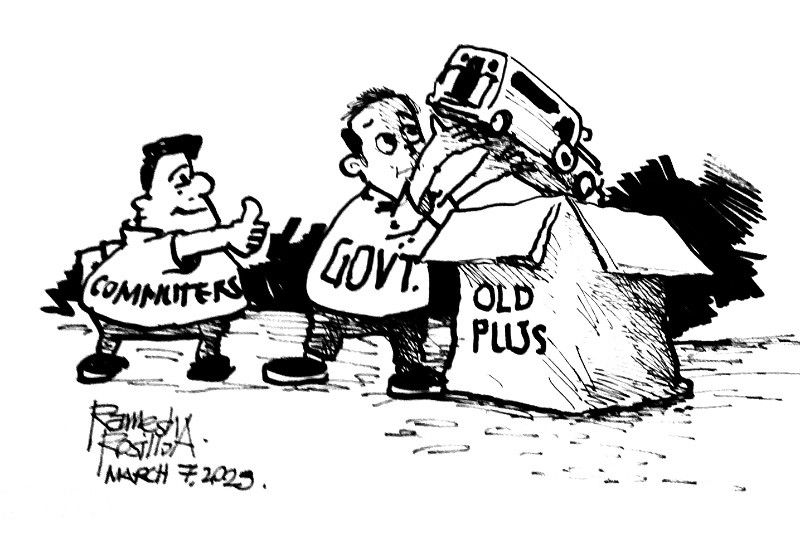EDITORIAL - Modern jeepneys good, but...

Yesterday was the first day of a week-long strike in several parts of the country to protest the government’s plan to phase out the traditional jeepneys.
We sympathize with the plight of those who stand to lose their livelihood, but it must be said that we cannot solve our public transportation woes unless we put something better on the road.
The traditional jeepneys we have now just cannot cope with the volume of passengers, or make the requirements to keep the planet livable.
Jeepneys evolved from the General Purpose --GP, hence the word jeep-- vehicles left behind by Americans after World War II. It could fit five at most, driver included. The traditional jeepney was born after some entrepreneurs modified them, put a roof over them, and extended the rear to accommodate passengers.
Over time jeepneys became bigger while still retaining the same familiar design; a small and constricted cockpit, side-facing passenger seats, and rear exit/entry. For a while the jeepneys were a source of Filipino pride and ingenuity, some were even seen as works of art with their unique paintwork.
But over time it became obvious they could no longer support the needs of the modern transport system. Which is why Metro Manila turned to the MRT, the LRT, vans-for-hire, and even motorcycle taxis.
That is also becoming true for many cities outside the capital. In Cebu City one only has look at the frantic early morning and late afternoon rush for vehicles to realize that we need something better than the jeepneys we have now.
It also became obvious many jeepneys are poorly maintained. Many have sharp edges in the passenger cabin, rust in the interior, and insufficient cover for passengers when it rains. Breakdowns in the street are also common. Many jeepneys also belch smoke into the air, causing pollution.
All that said, some drivers’ organizations and other stakeholders are right in saying the government cannot just require them to switch to modern jeepneys and not help in acquiring them.
“They didn’t mention how we can acquire the technology that they say are needed to create a fully electric jeepney. They just left us without any tools to do what they want in this modernization program,” said Sarao motors plant supervisor Ed Sarao.
If a jeepney plant supervisor like Sarao is having a hard time modernizing, imagine how small-time operators or owners of single jeepney units will do.
Before imposing their deadline, the government must help to make sure those who need to have modern jeepneys can get them.
- Latest























